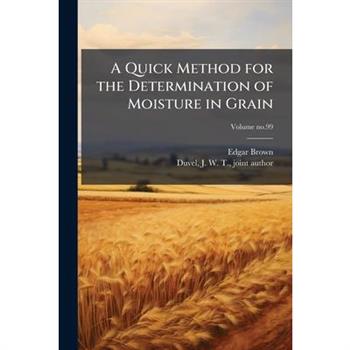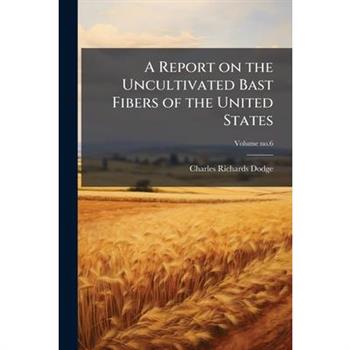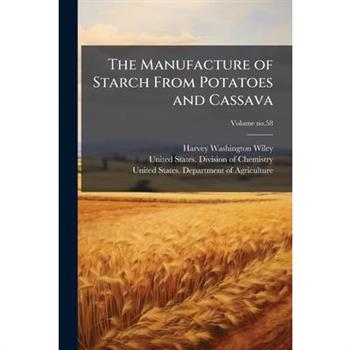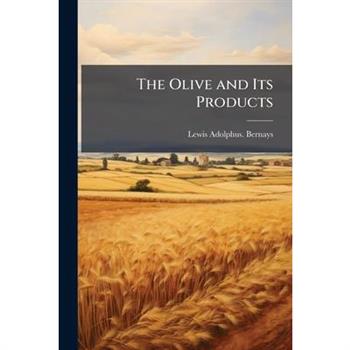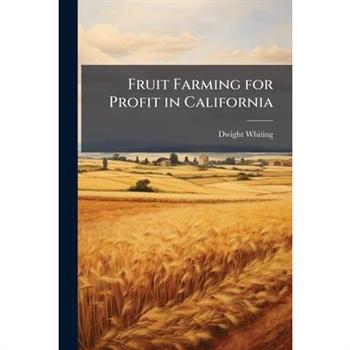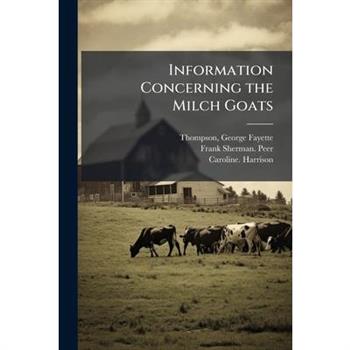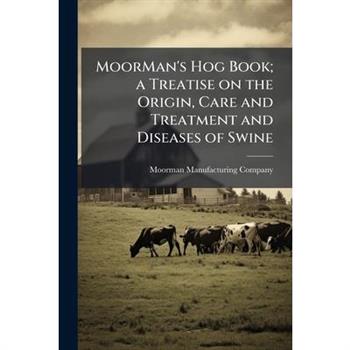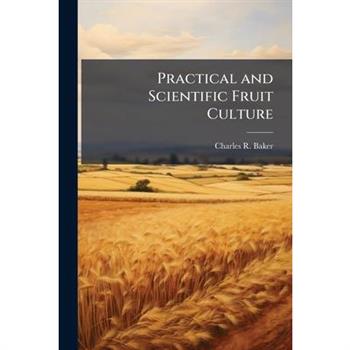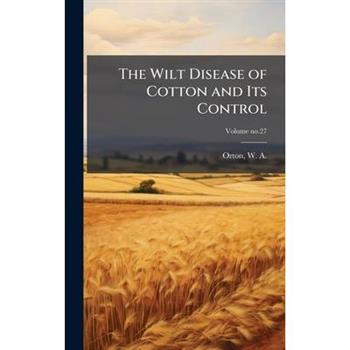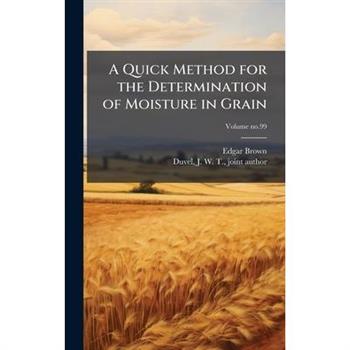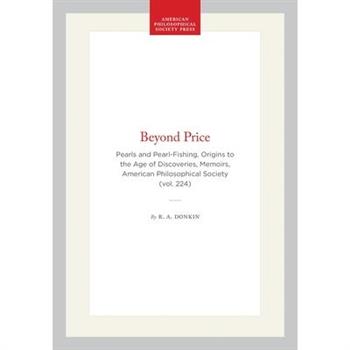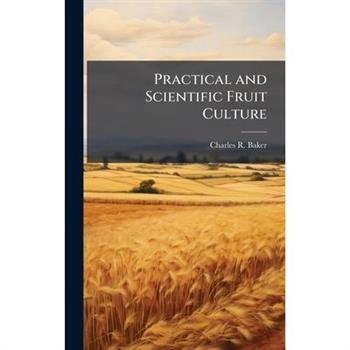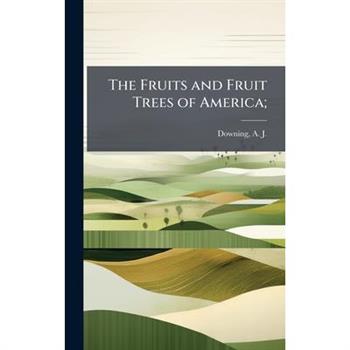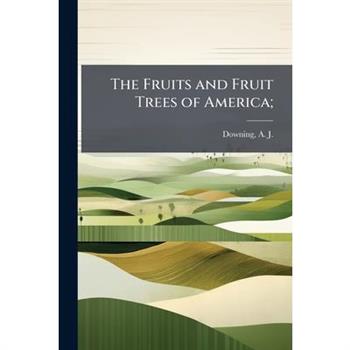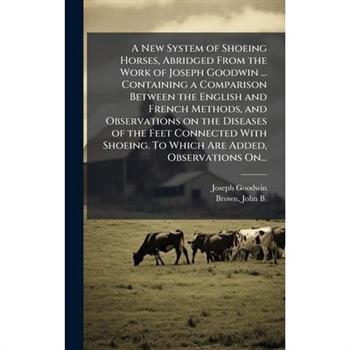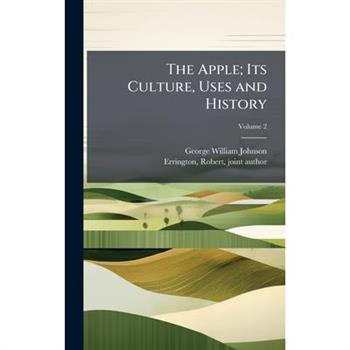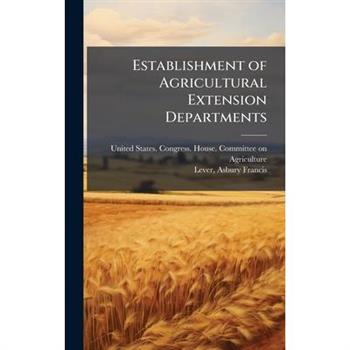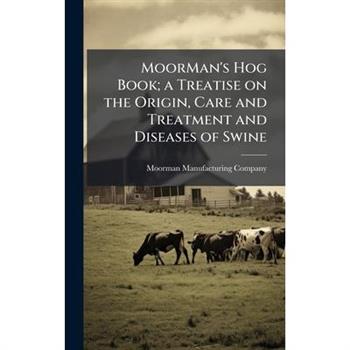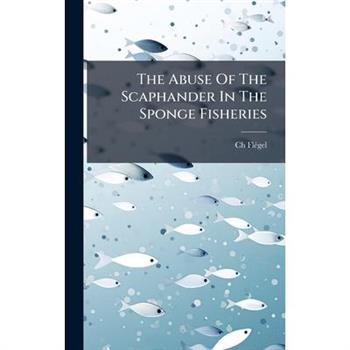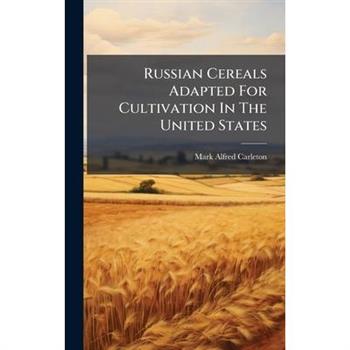The Farmer's Instructor
"The Farmer's Instructor", penned by Francis Blaikie and originally published circa 1810, offers a fascinating glimpse into the agricultural practices of the early 19th century. This volume provides practical guidance on a range of farming techniques, reflecting the period's understanding of crop cultivation, livestock management, and land use. Beyond its utility as a farming manual, the book serves as a valuable historical document, illuminating the daily lives and economic activities of rural communities. Readers interested in the history of agriculture, land management, or early technological advancements will find this work particularly insightful.This work has been selected by scholars as being culturally important, and is part of the knowledge base of civilization as we know it. This work was reproduced from the original artifact, and remains as true to the original work as possible. Therefore, you will see the original copyright references, library stamps (as most of these works have been housed in our most important libraries around the world), and other notations in the work.This work is in the public domain in the United States of America, and possibly other nations. Within the United States, you may freely copy and distribute this work, as no entity (individual or corporate) has a copyright on the body of the work.As a reproduction of a historical artifact, this work may contain missing or blurred pages, poor pictures, errant marks, etc. Scholars believe, and we concur, that this work is important enough to be preserved, reproduced, and made generally available to the public. We appreciate your support of the preservation process, and thank you for being an important part of keeping this knowledge alive and relevant.
A Quick Method for the Determination of Moisture in Grain
"A Quick Method for the Determination of Moisture in Grain," Volume 99, offers a detailed examination of techniques used in the early 20th century to assess moisture content in grain. Authored by Edgar Brown and J. W. T. Duvel, this volume provides insights into the methodologies employed to ensure quality control and standardization within the agricultural sector. It details the apparatus and procedures used, offering a valuable resource for understanding historical agricultural practices. This book is an important reference for agricultural scientists, historians of science, and anyone interested in the evolution of grain processing and storage techniques.This work has been selected by scholars as being culturally important, and is part of the knowledge base of civilization as we know it. This work was reproduced from the original artifact, and remains as true to the original work as possible. Therefore, you will see the original copyright references, library stamps (as most of these works have been housed in our most important libraries around the world), and other notations in the work.This work is in the public domain in the United States of America, and possibly other nations. Within the United States, you may freely copy and distribute this work, as no entity (individual or corporate) has a copyright on the body of the work.As a reproduction of a historical artifact, this work may contain missing or blurred pages, poor pictures, errant marks, etc. Scholars believe, and we concur, that this work is important enough to be preserved, reproduced, and made generally available to the public. We appreciate your support of the preservation process, and thank you for being an important part of keeping this knowledge alive and relevant.
Soils of the Eastern United States and Their Use-- XXIII. The Orangeburg Fine Sandy Loam
"Soils of the Eastern United States and Their Use-- XXIII. The Orangeburg Fine Sandy Loam," Volume 46, by Jay A. Bonsteel, offers a detailed examination of a specific soil type prevalent in the eastern United States. This report provides an in-depth analysis of the Orangeburg fine sandy loam, exploring its composition, properties, and suitability for various agricultural purposes. Originally published in 1911, this volume presents valuable insights into early 20th-century soil science and agricultural practices. Bonsteel's work serves as a historical record of soil management techniques and land use strategies employed during that era. Researchers, historians, and anyone interested in the evolution of agricultural science will find this study an informative resource.This work has been selected by scholars as being culturally important, and is part of the knowledge base of civilization as we know it. This work was reproduced from the original artifact, and remains as true to the original work as possible. Therefore, you will see the original copyright references, library stamps (as most of these works have been housed in our most important libraries around the world), and other notations in the work.This work is in the public domain in the United States of America, and possibly other nations. Within the United States, you may freely copy and distribute this work, as no entity (individual or corporate) has a copyright on the body of the work.As a reproduction of a historical artifact, this work may contain missing or blurred pages, poor pictures, errant marks, etc. Scholars believe, and we concur, that this work is important enough to be preserved, reproduced, and made generally available to the public. We appreciate your support of the preservation process, and thank you for being an important part of keeping this knowledge alive and relevant.
A Corn-belt Farming System Which Saves Harvest Labor by Hogging Down Crops
Explore the innovative agricultural techniques of the early 20th century with "A Corn-belt Farming System Which Saves Harvest Labor by Hogging Down Crops" by J.A. Drake. This fascinating study examines a farming method that utilizes hogs to harvest crops, specifically within the corn-belt region. Discover how this system aimed to reduce labor during harvest time and improve efficiency in agricultural practices. This publication offers a unique insight into the challenges and solutions faced by farmers of the era, and it sheds light on the evolving relationship between agriculture, animal husbandry, and technological adaptation. A valuable resource for historians, agricultural enthusiasts, and anyone interested in the ingenuity of early American farming.This work has been selected by scholars as being culturally important, and is part of the knowledge base of civilization as we know it. This work was reproduced from the original artifact, and remains as true to the original work as possible. Therefore, you will see the original copyright references, library stamps (as most of these works have been housed in our most important libraries around the world), and other notations in the work.This work is in the public domain in the United States of America, and possibly other nations. Within the United States, you may freely copy and distribute this work, as no entity (individual or corporate) has a copyright on the body of the work.As a reproduction of a historical artifact, this work may contain missing or blurred pages, poor pictures, errant marks, etc. Scholars believe, and we concur, that this work is important enough to be preserved, reproduced, and made generally available to the public. We appreciate your support of the preservation process, and thank you for being an important part of keeping this knowledge alive and relevant.
The Wilt Disease of Cotton and Its Control
The Wilt Disease of Cotton and Its Control, Volume 27, delves into the intricacies of a significant threat to cotton production. Penned by W.A. Orton, this authoritative work provides a comprehensive analysis of cotton wilt disease, offering insights into its causes, progression, and potential control measures.This volume presents invaluable knowledge for agricultural professionals, researchers, and anyone involved in cotton cultivation. Orton's meticulous approach ensures that readers gain a deep understanding of the disease's impact and the strategies available for mitigating its effects, making it an enduring resource for sustainable agriculture.This work has been selected by scholars as being culturally important, and is part of the knowledge base of civilization as we know it. This work was reproduced from the original artifact, and remains as true to the original work as possible. Therefore, you will see the original copyright references, library stamps (as most of these works have been housed in our most important libraries around the world), and other notations in the work.This work is in the public domain in the United States of America, and possibly other nations. Within the United States, you may freely copy and distribute this work, as no entity (individual or corporate) has a copyright on the body of the work.As a reproduction of a historical artifact, this work may contain missing or blurred pages, poor pictures, errant marks, etc. Scholars believe, and we concur, that this work is important enough to be preserved, reproduced, and made generally available to the public. We appreciate your support of the preservation process, and thank you for being an important part of keeping this knowledge alive and relevant.
The Commercial Grading of Corn
The Commercial Grading of Corn, Volume 41, by Carl S Scofield, offers a detailed examination of corn grading practices at the turn of the 20th century. This work provides insight into the standards and methods employed in the agricultural industry for evaluating and categorizing corn, a vital commodity. It serves as a valuable historical record for agricultural economists, historians, and anyone interested in the evolution of agribusiness and the practices surrounding the trade of agricultural products. Scofield's study details the intricate process of classifying corn based on various factors, providing a snapshot of the industry during a period of significant agricultural development. This work illuminates the economic considerations and scientific understanding that shaped the commercial grading of corn, making it an important resource for understanding the historical roots of modern agricultural practices.This work has been selected by scholars as being culturally important, and is part of the knowledge base of civilization as we know it. This work was reproduced from the original artifact, and remains as true to the original work as possible. Therefore, you will see the original copyright references, library stamps (as most of these works have been housed in our most important libraries around the world), and other notations in the work.This work is in the public domain in the United States of America, and possibly other nations. Within the United States, you may freely copy and distribute this work, as no entity (individual or corporate) has a copyright on the body of the work.As a reproduction of a historical artifact, this work may contain missing or blurred pages, poor pictures, errant marks, etc. Scholars believe, and we concur, that this work is important enough to be preserved, reproduced, and made generally available to the public. We appreciate your support of the preservation process, and thank you for being an important part of keeping this knowledge alive and relevant.
A Report on the Uncultivated Bast Fibers of the United States
"A Report on the Uncultivated Bast Fibers of the United States" by Charles Richards Dodge offers a comprehensive overview of fiber plants within the United States. This 1894 report, subtitled 'Including the History of Previous Experiments With the Plants of Fibers, and Brief Statements Relating to the Allied Species That Are Produced Commercially in the Old World, ' details historical attempts to cultivate fiber plants and provides insights into related species utilized commercially across the globe. This historical text provides valuable information on the uncultivated bast fibers available in the U.S., making it an essential resource for researchers, historians, and anyone interested in the agricultural and industrial history of the United States.This work has been selected by scholars as being culturally important, and is part of the knowledge base of civilization as we know it. This work was reproduced from the original artifact, and remains as true to the original work as possible. Therefore, you will see the original copyright references, library stamps (as most of these works have been housed in our most important libraries around the world), and other notations in the work.This work is in the public domain in the United States of America, and possibly other nations. Within the United States, you may freely copy and distribute this work, as no entity (individual or corporate) has a copyright on the body of the work.As a reproduction of a historical artifact, this work may contain missing or blurred pages, poor pictures, errant marks, etc. Scholars believe, and we concur, that this work is important enough to be preserved, reproduced, and made generally available to the public. We appreciate your support of the preservation process, and thank you for being an important part of keeping this knowledge alive and relevant.
A New Method of Turpentine Orcharding
"A New Method of Turpentine Orcharding," Volume 40, by Charles H. Herty, originally published in 1903, presents a detailed examination of innovative techniques in the turpentine industry. This historical work offers insights into early 20th-century agricultural practices and resource management. Herty's method aimed to improve turpentine extraction while minimizing damage to pine trees, a crucial concern for sustainable forestry. The book covers various aspects of turpentine orcharding, including tree preparation, tapping methods, and collection processes. It serves as a valuable resource for understanding the historical development of turpentine production and its impact on the Southern United States economy and environment. This volume will appeal to historians, agricultural scholars, and anyone interested in the evolution of natural resource industries.This work has been selected by scholars as being culturally important, and is part of the knowledge base of civilization as we know it. This work was reproduced from the original artifact, and remains as true to the original work as possible. Therefore, you will see the original copyright references, library stamps (as most of these works have been housed in our most important libraries around the world), and other notations in the work.This work is in the public domain in the United States of America, and possibly other nations. Within the United States, you may freely copy and distribute this work, as no entity (individual or corporate) has a copyright on the body of the work.As a reproduction of a historical artifact, this work may contain missing or blurred pages, poor pictures, errant marks, etc. Scholars believe, and we concur, that this work is important enough to be preserved, reproduced, and made generally available to the public. We appreciate your support of the preservation process, and thank you for being an important part of keeping this knowledge alive and relevant.
The Manufacture of Starch From Potatoes and Cassava
"The Manufacture of Starch From Potatoes and Cassava" (Volume no.58) delves into the intricate processes involved in extracting starch from two key agricultural products. This comprehensive volume, originally published around 1900, offers a detailed look at the methods and technologies employed in the starch industry at the turn of the century. Authored by Harvey Washington Wiley, along with contributions from the United States Division of Chemistry and the Department of Agriculture, the book provides valuable insights into the chemical and mechanical aspects of starch production. Readers will discover the historical context of these manufacturing techniques and gain an appreciation for the scientific principles underlying them. This book is an invaluable resource for historians of science and technology, as well as anyone interested in the evolution of agricultural and industrial chemistry.This work has been selected by scholars as being culturally important, and is part of the knowledge base of civilization as we know it. This work was reproduced from the original artifact, and remains as true to the original work as possible. Therefore, you will see the original copyright references, library stamps (as most of these works have been housed in our most important libraries around the world), and other notations in the work.This work is in the public domain in the United States of America, and possibly other nations. Within the United States, you may freely copy and distribute this work, as no entity (individual or corporate) has a copyright on the body of the work.As a reproduction of a historical artifact, this work may contain missing or blurred pages, poor pictures, errant marks, etc. Scholars believe, and we concur, that this work is important enough to be preserved, reproduced, and made generally available to the public. We appreciate your support of the preservation process, and thank you for being an important part of keeping this knowledge alive and relevant.
The Avocado in Florida
"The Avocado in Florida: Its Propagation, Cultivation, and Marketing" by P. H. Rolfs provides a comprehensive guide to growing avocados in Florida at the beginning of the 20th century. This book covers various aspects of avocado production, from propagation techniques and cultivation practices to marketing strategies for this increasingly popular fruit. Readers will discover detailed information on selecting the right varieties for the Florida climate, managing pests and diseases, and optimizing growing conditions for maximum yield.Originally published in 1904, this historic work offers valuable insights into the early development of the avocado industry in Florida and the challenges faced by pioneering growers. It remains a useful resource for anyone interested in the history of agriculture in the region or in the cultivation of tropical fruits. The book's detailed instructions and practical advice make it a valuable addition to any horticultural library.This work has been selected by scholars as being culturally important, and is part of the knowledge base of civilization as we know it. This work was reproduced from the original artifact, and remains as true to the original work as possible. Therefore, you will see the original copyright references, library stamps (as most of these works have been housed in our most important libraries around the world), and other notations in the work.This work is in the public domain in the United States of America, and possibly other nations. Within the United States, you may freely copy and distribute this work, as no entity (individual or corporate) has a copyright on the body of the work.As a reproduction of a historical artifact, this work may contain missing or blurred pages, poor pictures, errant marks, etc. Scholars believe, and we concur, that this work is important enough to be preserved, reproduced, and made generally available to the public. We appreciate your support of the preservation process, and thank you for being an important part of keeping this knowledge alive and relevant.
Modern Horseshoeing; a Practical Work on the Shoeing of Horses ..
"Modern Horseshoeing" by George Fleming, originally published in 1880, is a comprehensive guide to the art and science of shoeing horses. This practical work delves into the anatomy of the horse's foot, the principles of horseshoeing, and the various techniques employed by farriers. Fleming's detailed instructions cover everything from selecting the appropriate horseshoe to fitting and nailing it securely. The book includes information on dealing with common hoof ailments and injuries, making it an invaluable resource for both novice and experienced farriers. With its clear and concise language, "Modern Horseshoeing" remains a relevant and insightful guide for anyone involved in the care and maintenance of horses' feet.This work has been selected by scholars as being culturally important, and is part of the knowledge base of civilization as we know it. This work was reproduced from the original artifact, and remains as true to the original work as possible. Therefore, you will see the original copyright references, library stamps (as most of these works have been housed in our most important libraries around the world), and other notations in the work.This work is in the public domain in the United States of America, and possibly other nations. Within the United States, you may freely copy and distribute this work, as no entity (individual or corporate) has a copyright on the body of the work.As a reproduction of a historical artifact, this work may contain missing or blurred pages, poor pictures, errant marks, etc. Scholars believe, and we concur, that this work is important enough to be preserved, reproduced, and made generally available to the public. We appreciate your support of the preservation process, and thank you for being an important part of keeping this knowledge alive and relevant.
The Apple; Its Culture, Uses and History
Delve into the rich history and comprehensive cultivation of apples with "The Apple; Its Culture, Uses and History, Volume 2." This historical work, originally published in 1847, offers a detailed exploration of apple varieties, growing techniques, and their diverse applications. Authored by George William Johnson and Robert Errington, this volume provides insights into the practices of 19th-century horticulture. Explore the nuances of apple culture as understood by historical experts, offering a unique perspective on the fruit's significance throughout history. A valuable resource for historians, agricultural enthusiasts, and anyone interested in the legacy of this important fruit.This work has been selected by scholars as being culturally important, and is part of the knowledge base of civilization as we know it. This work was reproduced from the original artifact, and remains as true to the original work as possible. Therefore, you will see the original copyright references, library stamps (as most of these works have been housed in our most important libraries around the world), and other notations in the work.This work is in the public domain in the United States of America, and possibly other nations. Within the United States, you may freely copy and distribute this work, as no entity (individual or corporate) has a copyright on the body of the work.As a reproduction of a historical artifact, this work may contain missing or blurred pages, poor pictures, errant marks, etc. Scholars believe, and we concur, that this work is important enough to be preserved, reproduced, and made generally available to the public. We appreciate your support of the preservation process, and thank you for being an important part of keeping this knowledge alive and relevant.
The Olive and Its Products
"The Olive and Its Products" delves into the cultivation, processing, and diverse uses of the olive. Written by Lewis Adolphus Bernays, this volume provides a comprehensive overview of olive farming practices and the various products derived from this versatile fruit. From the orchard to the table, the book explores every stage of the olive's journey, offering insights into the historical significance and economic value of olive-related industries. Readers will discover detailed information on olive varieties, soil requirements, and pest management, as well as thorough discussions of olive oil extraction, preservation techniques, and the preparation of table olives. This book offers a detailed look into a time-honored agricultural tradition.This work has been selected by scholars as being culturally important, and is part of the knowledge base of civilization as we know it. This work was reproduced from the original artifact, and remains as true to the original work as possible. Therefore, you will see the original copyright references, library stamps (as most of these works have been housed in our most important libraries around the world), and other notations in the work.This work is in the public domain in the United States of America, and possibly other nations. Within the United States, you may freely copy and distribute this work, as no entity (individual or corporate) has a copyright on the body of the work.As a reproduction of a historical artifact, this work may contain missing or blurred pages, poor pictures, errant marks, etc. Scholars believe, and we concur, that this work is important enough to be preserved, reproduced, and made generally available to the public. We appreciate your support of the preservation process, and thank you for being an important part of keeping this knowledge alive and relevant.
Fruit Farming for Profit in California
"Fruit Farming for Profit in California," penned by Dwight Whiting and originally published in 1893, offers a fascinating glimpse into the burgeoning fruit industry of late 19th-century California. This practical guide provides detailed insights into the cultivation, management, and marketing of various fruit crops, reflecting the agricultural practices and economic opportunities of the era. Whiting's work not only serves as a valuable historical record but also offers timeless wisdom on the principles of successful fruit farming. Readers will discover techniques for soil preparation, irrigation, pest control, and harvesting, all tailored to the unique climate and conditions of California. Whether you're a historian, agricultural enthusiast, or modern-day farmer, this book provides a unique perspective on the evolution of fruit farming and its enduring legacy in the Golden State.This work has been selected by scholars as being culturally important, and is part of the knowledge base of civilization as we know it. This work was reproduced from the original artifact, and remains as true to the original work as possible. Therefore, you will see the original copyright references, library stamps (as most of these works have been housed in our most important libraries around the world), and other notations in the work.This work is in the public domain in the United States of America, and possibly other nations. Within the United States, you may freely copy and distribute this work, as no entity (individual or corporate) has a copyright on the body of the work.As a reproduction of a historical artifact, this work may contain missing or blurred pages, poor pictures, errant marks, etc. Scholars believe, and we concur, that this work is important enough to be preserved, reproduced, and made generally available to the public. We appreciate your support of the preservation process, and thank you for being an important part of keeping this knowledge alive and relevant.
Information Concerning the Milch Goats
"Information Concerning the Milch Goats," originally published in 1905, is a comprehensive guide to the care and management of dairy goats. Written by George Fayette Thompson, Frank Sherman Peer, and Caroline Harrison, this historical text offers insights into the breeds, feeding, and general husbandry practices of milch goats during the early 20th century. The book provides practical advice for farmers and enthusiasts looking to optimize milk production and maintain healthy herds. It covers a range of topics, including breed selection, proper nutrition, disease prevention, and the construction of suitable housing. This detailed manual is invaluable for anyone interested in the history of agriculture or the traditional methods of goat farming. Its detailed descriptions and practical advice offer a glimpse into the past and provide a solid foundation for understanding modern goat-keeping practices.This work has been selected by scholars as being culturally important, and is part of the knowledge base of civilization as we know it. This work was reproduced from the original artifact, and remains as true to the original work as possible. Therefore, you will see the original copyright references, library stamps (as most of these works have been housed in our most important libraries around the world), and other notations in the work.This work is in the public domain in the United States of America, and possibly other nations. Within the United States, you may freely copy and distribute this work, as no entity (individual or corporate) has a copyright on the body of the work.As a reproduction of a historical artifact, this work may contain missing or blurred pages, poor pictures, errant marks, etc. Scholars believe, and we concur, that this work is important enough to be preserved, reproduced, and made generally available to the public. We appreciate your support of the preservation process, and thank you for being an important part of keeping this knowledge alive and relevant.
MoorMan's Hog Book; a Treatise on the Origin, Care and Treatment and Diseases of Swine
"MoorMan's Hog Book" offers a comprehensive look at the raising and care of swine in the early 20th century. Published in 1920 by the Moorman Manufacturing Company, this treatise covers the origins of hogs, their proper care, treatment methods, and common diseases. Aimed at farmers and agricultural professionals, the book provides practical advice and insights into best practices for hog farming during this era. With detailed information on everything from feeding to disease prevention, "MoorMan's Hog Book" is a valuable historical resource for understanding the evolution of animal husbandry and agricultural techniques.This work has been selected by scholars as being culturally important, and is part of the knowledge base of civilization as we know it. This work was reproduced from the original artifact, and remains as true to the original work as possible. Therefore, you will see the original copyright references, library stamps (as most of these works have been housed in our most important libraries around the world), and other notations in the work.This work is in the public domain in the United States of America, and possibly other nations. Within the United States, you may freely copy and distribute this work, as no entity (individual or corporate) has a copyright on the body of the work.As a reproduction of a historical artifact, this work may contain missing or blurred pages, poor pictures, errant marks, etc. Scholars believe, and we concur, that this work is important enough to be preserved, reproduced, and made generally available to the public. We appreciate your support of the preservation process, and thank you for being an important part of keeping this knowledge alive and relevant.
The Farmer's Instructor
"The Farmer's Instructor", penned by Francis Blaikie and originally published circa 1810, offers a fascinating glimpse into the agricultural practices of the early 19th century. This volume provides practical guidance on a range of farming techniques, reflecting the period's understanding of crop cultivation, livestock management, and land use. Beyond its utility as a farming manual, the book serves as a valuable historical document, illuminating the daily lives and economic activities of rural communities. Readers interested in the history of agriculture, land management, or early technological advancements will find this work particularly insightful.This work has been selected by scholars as being culturally important, and is part of the knowledge base of civilization as we know it. This work was reproduced from the original artifact, and remains as true to the original work as possible. Therefore, you will see the original copyright references, library stamps (as most of these works have been housed in our most important libraries around the world), and other notations in the work.This work is in the public domain in the United States of America, and possibly other nations. Within the United States, you may freely copy and distribute this work, as no entity (individual or corporate) has a copyright on the body of the work.As a reproduction of a historical artifact, this work may contain missing or blurred pages, poor pictures, errant marks, etc. Scholars believe, and we concur, that this work is important enough to be preserved, reproduced, and made generally available to the public. We appreciate your support of the preservation process, and thank you for being an important part of keeping this knowledge alive and relevant.
Farm Dairying, a Treatise of Dairy Cattle, Their Feeding and Care, and the Handling and Disposition of Dairy Produce on the Farm
"Farm Dairying" is a comprehensive treatise on the practical aspects of dairy farming, focusing on the care, feeding, and management of dairy cattle, and the handling of dairy produce on the farm. Written in 1919 by Christian Larsen, this book provides detailed guidance on every facet of dairy farming, from selecting and breeding healthy cattle to efficiently processing milk and other dairy products. This book offers timeless advice for both novice and experienced dairy farmers. It emphasizes sustainable practices and efficient resource utilization, making it a valuable resource for anyone involved in dairy production. The content includes detailed explanations of various breeds, feeding techniques, and methods for ensuring the health and productivity of dairy herds.This work has been selected by scholars as being culturally important, and is part of the knowledge base of civilization as we know it. This work was reproduced from the original artifact, and remains as true to the original work as possible. Therefore, you will see the original copyright references, library stamps (as most of these works have been housed in our most important libraries around the world), and other notations in the work.This work is in the public domain in the United States of America, and possibly other nations. Within the United States, you may freely copy and distribute this work, as no entity (individual or corporate) has a copyright on the body of the work.As a reproduction of a historical artifact, this work may contain missing or blurred pages, poor pictures, errant marks, etc. Scholars believe, and we concur, that this work is important enough to be preserved, reproduced, and made generally available to the public. We appreciate your support of the preservation process, and thank you for being an important part of keeping this knowledge alive and relevant.
Utility Value of Pure-bred Live Stock
"Utility Value of Pure-bred Live Stock," Volume 235, by D. S. Burch, examines the practical and economic benefits of raising purebred livestock. Published in 1922, this work offers insights into the agricultural practices of the early 20th century, emphasizing the importance of selective breeding and the advantages of purebred animals in farming. Burch's analysis provides a detailed look at the utility and value derived from livestock, making it a valuable resource for those interested in agricultural history and the evolution of animal husbandry.This work has been selected by scholars as being culturally important, and is part of the knowledge base of civilization as we know it. This work was reproduced from the original artifact, and remains as true to the original work as possible. Therefore, you will see the original copyright references, library stamps (as most of these works have been housed in our most important libraries around the world), and other notations in the work.This work is in the public domain in the United States of America, and possibly other nations. Within the United States, you may freely copy and distribute this work, as no entity (individual or corporate) has a copyright on the body of the work.As a reproduction of a historical artifact, this work may contain missing or blurred pages, poor pictures, errant marks, etc. Scholars believe, and we concur, that this work is important enough to be preserved, reproduced, and made generally available to the public. We appreciate your support of the preservation process, and thank you for being an important part of keeping this knowledge alive and relevant.
Practical and Scientific Fruit Culture
"Practical and Scientific Fruit Culture" by Charles R. Baker, originally published in 1866, offers a detailed guide to the principles and practices of fruit cultivation. This comprehensive treatise covers a wide array of topics, including the selection of suitable soils, the preparation of the land, the propagation of fruit trees, and the management of orchards. Baker emphasizes the importance of integrating scientific methods with practical experience, providing readers with a balanced approach to fruit growing. The book delves into various aspects of horticulture, such as pruning techniques, pest control, and disease prevention, ensuring a thorough understanding of the challenges and opportunities in fruit culture. With its clear and accessible language, "Practical and Scientific Fruit Culture" remains a valuable resource for both amateur and professional fruit growers, offering insights into the time-honored methods of cultivating healthy and productive fruit trees. This historical work provides a fascinating glimpse into 19th-century agricultural practices.This work has been selected by scholars as being culturally important, and is part of the knowledge base of civilization as we know it. This work was reproduced from the original artifact, and remains as true to the original work as possible. Therefore, you will see the original copyright references, library stamps (as most of these works have been housed in our most important libraries around the world), and other notations in the work.This work is in the public domain in the United States of America, and possibly other nations. Within the United States, you may freely copy and distribute this work, as no entity (individual or corporate) has a copyright on the body of the work.As a reproduction of a historical artifact, this work may contain missing or blurred pages, poor pictures, errant marks, etc. Scholars believe, and we concur, that this work is important enough to be preserved, reproduced, and made generally available to the public. We appreciate your support of the preservation process, and thank you for being an important part of keeping this knowledge alive and relevant.
Farm Implements and Farm Machinery
"Farm Implements and Farm Machinery" by John Jacob Thomas, originally published in 1886, offers a comprehensive overview of agricultural technology during the late 19th century. This detailed guide explores the various tools and machines that revolutionized farming practices, enhancing productivity and efficiency. From plows and harrows to reapers and threshers, the book meticulously describes the construction, operation, and maintenance of these essential implements. Illustrated with numerous engravings, the text provides valuable insights into the mechanical principles underlying each device, making it an indispensable resource for farmers, agricultural students, and historians interested in the evolution of agricultural technology. Thomas's work not only documents the innovations of its time but also reflects the ingenuity and resourcefulness of American agriculture. A valuable historical document providing technical details from an important era of agricultural development.This work has been selected by scholars as being culturally important, and is part of the knowledge base of civilization as we know it. This work was reproduced from the original artifact, and remains as true to the original work as possible. Therefore, you will see the original copyright references, library stamps (as most of these works have been housed in our most important libraries around the world), and other notations in the work.This work is in the public domain in the United States of America, and possibly other nations. Within the United States, you may freely copy and distribute this work, as no entity (individual or corporate) has a copyright on the body of the work.As a reproduction of a historical artifact, this work may contain missing or blurred pages, poor pictures, errant marks, etc. Scholars believe, and we concur, that this work is important enough to be preserved, reproduced, and made generally available to the public. We appreciate your support of the preservation process, and thank you for being an important part of keeping this knowledge alive and relevant.
The Wilt Disease of Cotton and Its Control
The Wilt Disease of Cotton and Its Control, Volume 27, delves into the intricacies of a significant threat to cotton production. Penned by W.A. Orton, this authoritative work provides a comprehensive analysis of cotton wilt disease, offering insights into its causes, progression, and potential control measures.This volume presents invaluable knowledge for agricultural professionals, researchers, and anyone involved in cotton cultivation. Orton's meticulous approach ensures that readers gain a deep understanding of the disease's impact and the strategies available for mitigating its effects, making it an enduring resource for sustainable agriculture.This work has been selected by scholars as being culturally important, and is part of the knowledge base of civilization as we know it. This work was reproduced from the original artifact, and remains as true to the original work as possible. Therefore, you will see the original copyright references, library stamps (as most of these works have been housed in our most important libraries around the world), and other notations in the work.This work is in the public domain in the United States of America, and possibly other nations. Within the United States, you may freely copy and distribute this work, as no entity (individual or corporate) has a copyright on the body of the work.As a reproduction of a historical artifact, this work may contain missing or blurred pages, poor pictures, errant marks, etc. Scholars believe, and we concur, that this work is important enough to be preserved, reproduced, and made generally available to the public. We appreciate your support of the preservation process, and thank you for being an important part of keeping this knowledge alive and relevant.
A Quick Method for the Determination of Moisture in Grain
"A Quick Method for the Determination of Moisture in Grain," Volume 99, offers a detailed examination of techniques used in the early 20th century to assess moisture content in grain. Authored by Edgar Brown and J. W. T. Duvel, this volume provides insights into the methodologies employed to ensure quality control and standardization within the agricultural sector. It details the apparatus and procedures used, offering a valuable resource for understanding historical agricultural practices. This book is an important reference for agricultural scientists, historians of science, and anyone interested in the evolution of grain processing and storage techniques.This work has been selected by scholars as being culturally important, and is part of the knowledge base of civilization as we know it. This work was reproduced from the original artifact, and remains as true to the original work as possible. Therefore, you will see the original copyright references, library stamps (as most of these works have been housed in our most important libraries around the world), and other notations in the work.This work is in the public domain in the United States of America, and possibly other nations. Within the United States, you may freely copy and distribute this work, as no entity (individual or corporate) has a copyright on the body of the work.As a reproduction of a historical artifact, this work may contain missing or blurred pages, poor pictures, errant marks, etc. Scholars believe, and we concur, that this work is important enough to be preserved, reproduced, and made generally available to the public. We appreciate your support of the preservation process, and thank you for being an important part of keeping this knowledge alive and relevant.
Farm Stock; a Practical Treatise on Horses, Cattle, Sheep and Swine, Including Their Breeding, Feeding, Care and Management in Health and Disease
"Farm Stock" is a comprehensive guide to the breeding, feeding, care, and management of horses, cattle, sheep, and swine. Written in 1909 by Charles William Burkett, this practical treatise offers invaluable insights into the world of animal husbandry during the early 20th century. Covering everything from the selection of breeding stock to the prevention and treatment of common diseases, this book provides detailed instructions for farmers and animal enthusiasts alike. Discover time-tested techniques for raising healthy and productive livestock, ensuring the success of your farm.This work has been selected by scholars as being culturally important, and is part of the knowledge base of civilization as we know it. This work was reproduced from the original artifact, and remains as true to the original work as possible. Therefore, you will see the original copyright references, library stamps (as most of these works have been housed in our most important libraries around the world), and other notations in the work.This work is in the public domain in the United States of America, and possibly other nations. Within the United States, you may freely copy and distribute this work, as no entity (individual or corporate) has a copyright on the body of the work.As a reproduction of a historical artifact, this work may contain missing or blurred pages, poor pictures, errant marks, etc. Scholars believe, and we concur, that this work is important enough to be preserved, reproduced, and made generally available to the public. We appreciate your support of the preservation process, and thank you for being an important part of keeping this knowledge alive and relevant.
Rice Cultivation Under Abiotic Stress
Rice Cultivation under Abiotic Stresses: Challenges and Opportunities provides a unique look at three key factors in optimized rice yield - cultivation practices, understanding abiotic stress response, and mitigation strategies - enabling the reader to better understand the cause, effect, and means of protecting rice crop yield. It is a uniquely comprehensive resource for advancing the sustainable and optimal production of rice that will be a valuable resource for researchers and advanced students in Agriculture, Agronomy, Botany, Plant Physiology, and Environmental Science. Rice is the primary source of energy for over half of the world's people. It can play a vital role against mal and under nutrition, but as climate and other abiotic challenges continue to impact yield, steps need to be taken to ensure production.
Beyond Price
Man has been intrigued by the origin of pearls, sensitive to their beauty, and convinced of their medicinal value for at least 5 cent. A mixture of folklore and observation preceded the earliest scientific inquiries. Fishing and trade commenced in S. Asia, between India and Sri Lanka and around the Persian Gulf. In W. and Central Europe, Inner Asia and China, and N. Amer. Freshwater pearls were probably known and treasured before those of marine origin. A refined nomenclature points to a long familiarity with etymologically related words for 'pearl'. Pearls were prominent among the luxury products of world trade and were high among the objectives of expeditions to the eastern and western Tropics. Illustrations.
Practical and Scientific Fruit Culture
"Practical and Scientific Fruit Culture" by Charles R. Baker, originally published in 1866, offers a detailed guide to the principles and practices of fruit cultivation. This comprehensive treatise covers a wide array of topics, including the selection of suitable soils, the preparation of the land, the propagation of fruit trees, and the management of orchards. Baker emphasizes the importance of integrating scientific methods with practical experience, providing readers with a balanced approach to fruit growing. The book delves into various aspects of horticulture, such as pruning techniques, pest control, and disease prevention, ensuring a thorough understanding of the challenges and opportunities in fruit culture. With its clear and accessible language, "Practical and Scientific Fruit Culture" remains a valuable resource for both amateur and professional fruit growers, offering insights into the time-honored methods of cultivating healthy and productive fruit trees. This historical work provides a fascinating glimpse into 19th-century agricultural practices.This work has been selected by scholars as being culturally important, and is part of the knowledge base of civilization as we know it. This work was reproduced from the original artifact, and remains as true to the original work as possible. Therefore, you will see the original copyright references, library stamps (as most of these works have been housed in our most important libraries around the world), and other notations in the work.This work is in the public domain in the United States of America, and possibly other nations. Within the United States, you may freely copy and distribute this work, as no entity (individual or corporate) has a copyright on the body of the work.As a reproduction of a historical artifact, this work may contain missing or blurred pages, poor pictures, errant marks, etc. Scholars believe, and we concur, that this work is important enough to be preserved, reproduced, and made generally available to the public. We appreciate your support of the preservation process, and thank you for being an important part of keeping this knowledge alive and relevant.
The Fruits and Fruit Trees of America;
"The Fruits and Fruit Trees of America" by A. J. Downing, first published in 1845, is a comprehensive guide to the cultivation and appreciation of fruit trees. This seminal work describes numerous varieties of apples, pears, peaches, plums, cherries, and other fruits, detailing their characteristics, cultivation methods, and culinary uses. Downing's detailed descriptions and meticulous illustrations make this book an invaluable resource for both amateur and professional horticulturists. Beyond its practical advice, the book reflects a broader cultural interest in the natural world and the improvement of American agriculture during the 19th century. This classic provides a window into the past, showcasing the varieties of fruit once cherished and the techniques used to cultivate them, maintaining its relevance for those interested in historical horticulture and heirloom fruit varieties.This work has been selected by scholars as being culturally important, and is part of the knowledge base of civilization as we know it. This work was reproduced from the original artifact, and remains as true to the original work as possible. Therefore, you will see the original copyright references, library stamps (as most of these works have been housed in our most important libraries around the world), and other notations in the work.This work is in the public domain in the United States of America, and possibly other nations. Within the United States, you may freely copy and distribute this work, as no entity (individual or corporate) has a copyright on the body of the work.As a reproduction of a historical artifact, this work may contain missing or blurred pages, poor pictures, errant marks, etc. Scholars believe, and we concur, that this work is important enough to be preserved, reproduced, and made generally available to the public. We appreciate your support of the preservation process, and thank you for being an important part of keeping this knowledge alive and relevant.
Facts for Farmers; Also for the Family Circle. A Compost of Rich Materials for All Land-owners, About Domestic Animals and Domestic Economy; Farm Buildings; Gardens, Orchards, and Vineyards; and All F
"Facts for Farmers; Also for the Family Circle" is a comprehensive guide compiled for landowners and those interested in agricultural practices during the mid-19th century. Edited by Solon Robinson, this volume covers a wide array of topics essential for successful farming and domestic life. It includes detailed information on domestic animals, farm buildings, gardens, orchards, vineyards, and various farm crops. The book also addresses crucial aspects such as tools, fences, fertilization, and draining techniques. Offering practical advice and insights relevant to the agricultural landscape of its time, this work provides a valuable glimpse into the challenges and innovations faced by farmers. It remains a fascinating resource for historians, agricultural enthusiasts, and anyone curious about rural life in the 19th century.This work has been selected by scholars as being culturally important, and is part of the knowledge base of civilization as we know it. This work was reproduced from the original artifact, and remains as true to the original work as possible. Therefore, you will see the original copyright references, library stamps (as most of these works have been housed in our most important libraries around the world), and other notations in the work.This work is in the public domain in the United States of America, and possibly other nations. Within the United States, you may freely copy and distribute this work, as no entity (individual or corporate) has a copyright on the body of the work.As a reproduction of a historical artifact, this work may contain missing or blurred pages, poor pictures, errant marks, etc. Scholars believe, and we concur, that this work is important enough to be preserved, reproduced, and made generally available to the public. We appreciate your support of the preservation process, and thank you for being an important part of keeping this knowledge alive and relevant.
Facts for Farmers; Also for the Family Circle. A Compost of Rich Materials for All Land-owners, About Domestic Animals and Domestic Economy; Farm Buildings; Gardens, Orchards, and Vineyards; and All F
"Facts for Farmers; Also for the Family Circle" is a comprehensive guide compiled for landowners and those interested in agricultural practices during the mid-19th century. Edited by Solon Robinson, this volume covers a wide array of topics essential for successful farming and domestic life. It includes detailed information on domestic animals, farm buildings, gardens, orchards, vineyards, and various farm crops. The book also addresses crucial aspects such as tools, fences, fertilization, and draining techniques. Offering practical advice and insights relevant to the agricultural landscape of its time, this work provides a valuable glimpse into the challenges and innovations faced by farmers. It remains a fascinating resource for historians, agricultural enthusiasts, and anyone curious about rural life in the 19th century.This work has been selected by scholars as being culturally important, and is part of the knowledge base of civilization as we know it. This work was reproduced from the original artifact, and remains as true to the original work as possible. Therefore, you will see the original copyright references, library stamps (as most of these works have been housed in our most important libraries around the world), and other notations in the work.This work is in the public domain in the United States of America, and possibly other nations. Within the United States, you may freely copy and distribute this work, as no entity (individual or corporate) has a copyright on the body of the work.As a reproduction of a historical artifact, this work may contain missing or blurred pages, poor pictures, errant marks, etc. Scholars believe, and we concur, that this work is important enough to be preserved, reproduced, and made generally available to the public. We appreciate your support of the preservation process, and thank you for being an important part of keeping this knowledge alive and relevant.
The American Farmer's Pictorial Cyclopedia of Live Stock ..
"The American Farmer's Pictorial Cyclopedia of Live Stock" is a comprehensive guide to livestock management from the late 19th century. Authored by Jonathan Periam and A.H. Baker, this cyclopedia offers detailed insights into the practices, techniques, and knowledge essential for successful animal husbandry during that era. This historical text provides a valuable glimpse into the agricultural landscape of the United States, making it an indispensable resource for historians, agricultural enthusiasts, and anyone interested in the evolution of farming practices.This work has been selected by scholars as being culturally important, and is part of the knowledge base of civilization as we know it. This work was reproduced from the original artifact, and remains as true to the original work as possible. Therefore, you will see the original copyright references, library stamps (as most of these works have been housed in our most important libraries around the world), and other notations in the work.This work is in the public domain in the United States of America, and possibly other nations. Within the United States, you may freely copy and distribute this work, as no entity (individual or corporate) has a copyright on the body of the work.As a reproduction of a historical artifact, this work may contain missing or blurred pages, poor pictures, errant marks, etc. Scholars believe, and we concur, that this work is important enough to be preserved, reproduced, and made generally available to the public. We appreciate your support of the preservation process, and thank you for being an important part of keeping this knowledge alive and relevant.
Illustrated American Horse Book, Containing ... Improved Modern Treatment ... of the Various Diseases of the Horse, Also a History of the Breeds of Horses, and ... of the Trotting Horses of America ..
An invaluable resource for horse enthusiasts and professionals alike, the "Illustrated American Horse Book" offers a comprehensive guide to the care, treatment, and understanding of horses in 19th-century America. Authored anonymously, this detailed volume covers a wide array of topics, from the improved modern treatment of various equine diseases to a thorough history of horse breeds, with special attention given to the celebrated trotting horses of America. Readers will find detailed instructions for breaking horses and implementing systematic training methods. This book provides a unique window into the historical practices of horsemanship and veterinary care, making it an essential addition to any collection focused on agricultural history, veterinary science, or the cultural significance of horses in the United States. Experience a detailed look into 19th-century equine care with this illustrated guide.This work has been selected by scholars as being culturally important, and is part of the knowledge base of civilization as we know it. This work was reproduced from the original artifact, and remains as true to the original work as possible. Therefore, you will see the original copyright references, library stamps (as most of these works have been housed in our most important libraries around the world), and other notations in the work.This work is in the public domain in the United States of America, and possibly other nations. Within the United States, you may freely copy and distribute this work, as no entity (individual or corporate) has a copyright on the body of the work.As a reproduction of a historical artifact, this work may contain missing or blurred pages, poor pictures, errant marks, etc. Scholars believe, and we concur, that this work is important enough to be preserved, reproduced, and made generally available to the public. We appreciate your support of the preservation process, and thank you for being an important part of keeping this knowledge alive and relevant.
Fruits and Fruit-trees of America..
Discover the comprehensive guide to fruit and fruit-trees in America, authored by A. J. Downing. This historical work, "Fruits and Fruit-trees of America," provides detailed descriptions and insights into the cultivation of various fruits, offering a valuable resource for horticulturists, gardeners, and anyone interested in the rich agricultural heritage of the United States. Explore the varieties, growing techniques, and characteristics of fruits that have shaped American orchards and gardens.This work has been selected by scholars as being culturally important, and is part of the knowledge base of civilization as we know it. This work was reproduced from the original artifact, and remains as true to the original work as possible. Therefore, you will see the original copyright references, library stamps (as most of these works have been housed in our most important libraries around the world), and other notations in the work.This work is in the public domain in the United States of America, and possibly other nations. Within the United States, you may freely copy and distribute this work, as no entity (individual or corporate) has a copyright on the body of the work.As a reproduction of a historical artifact, this work may contain missing or blurred pages, poor pictures, errant marks, etc. Scholars believe, and we concur, that this work is important enough to be preserved, reproduced, and made generally available to the public. We appreciate your support of the preservation process, and thank you for being an important part of keeping this knowledge alive and relevant.
Modern Horseshoeing; a Practical Work on the Shoeing of Horses ..
"Modern Horseshoeing" by George Fleming, originally published in 1880, is a comprehensive guide to the art and science of shoeing horses. This practical work delves into the anatomy of the horse's foot, the principles of horseshoeing, and the various techniques employed by farriers. Fleming's detailed instructions cover everything from selecting the appropriate horseshoe to fitting and nailing it securely. The book includes information on dealing with common hoof ailments and injuries, making it an invaluable resource for both novice and experienced farriers. With its clear and concise language, "Modern Horseshoeing" remains a relevant and insightful guide for anyone involved in the care and maintenance of horses' feet.This work has been selected by scholars as being culturally important, and is part of the knowledge base of civilization as we know it. This work was reproduced from the original artifact, and remains as true to the original work as possible. Therefore, you will see the original copyright references, library stamps (as most of these works have been housed in our most important libraries around the world), and other notations in the work.This work is in the public domain in the United States of America, and possibly other nations. Within the United States, you may freely copy and distribute this work, as no entity (individual or corporate) has a copyright on the body of the work.As a reproduction of a historical artifact, this work may contain missing or blurred pages, poor pictures, errant marks, etc. Scholars believe, and we concur, that this work is important enough to be preserved, reproduced, and made generally available to the public. We appreciate your support of the preservation process, and thank you for being an important part of keeping this knowledge alive and relevant.
The Fruits and Fruit Trees of America;
"The Fruits and Fruit Trees of America" by A. J. Downing, first published in 1845, is a comprehensive guide to the cultivation and appreciation of fruit trees. This seminal work describes numerous varieties of apples, pears, peaches, plums, cherries, and other fruits, detailing their characteristics, cultivation methods, and culinary uses. Downing's detailed descriptions and meticulous illustrations make this book an invaluable resource for both amateur and professional horticulturists. Beyond its practical advice, the book reflects a broader cultural interest in the natural world and the improvement of American agriculture during the 19th century. This classic provides a window into the past, showcasing the varieties of fruit once cherished and the techniques used to cultivate them, maintaining its relevance for those interested in historical horticulture and heirloom fruit varieties.This work has been selected by scholars as being culturally important, and is part of the knowledge base of civilization as we know it. This work was reproduced from the original artifact, and remains as true to the original work as possible. Therefore, you will see the original copyright references, library stamps (as most of these works have been housed in our most important libraries around the world), and other notations in the work.This work is in the public domain in the United States of America, and possibly other nations. Within the United States, you may freely copy and distribute this work, as no entity (individual or corporate) has a copyright on the body of the work.As a reproduction of a historical artifact, this work may contain missing or blurred pages, poor pictures, errant marks, etc. Scholars believe, and we concur, that this work is important enough to be preserved, reproduced, and made generally available to the public. We appreciate your support of the preservation process, and thank you for being an important part of keeping this knowledge alive and relevant.
A New System of Shoeing Horses, Abridged From the Work of Joseph Goodwin ... Containing a Comparison Between the English and French Methods, and Observations on the Diseases of the Feet Connected With
"A New System of Shoeing Horses, Abridged From the Work of Joseph Goodwin" offers a detailed look at the art and science of horseshoeing in the early 19th century. Edited by John B. Brown, this work presents a comparative analysis of English and French methods of shoeing horses, providing valuable insights into the techniques and philosophies of the time. The book delves into observations on diseases of the feet that are connected with shoeing, offering practical advice for maintaining the health and well-being of horses.This historical text is a fascinating resource for those interested in veterinary history, agricultural practices, and the evolution of equine care. It provides a unique window into the past, showcasing the knowledge and expertise required to care for these essential animals. The comparison between English and French methods adds a layer of international perspective, making it a valuable addition to any collection on animal husbandry and historical technology.This work has been selected by scholars as being culturally important, and is part of the knowledge base of civilization as we know it. This work was reproduced from the original artifact, and remains as true to the original work as possible. Therefore, you will see the original copyright references, library stamps (as most of these works have been housed in our most important libraries around the world), and other notations in the work.This work is in the public domain in the United States of America, and possibly other nations. Within the United States, you may freely copy and distribute this work, as no entity (individual or corporate) has a copyright on the body of the work.As a reproduction of a historical artifact, this work may contain missing or blurred pages, poor pictures, errant marks, etc. Scholars believe, and we concur, that this work is important enough to be preserved, reproduced, and made generally available to the public. We appreciate your support of the preservation process, and thank you for being an important part of keeping this knowledge alive and relevant.
Cordage Fibres
"Cordage Fibres: Their Cultivation, Extraction and Preparation for Market" provides a detailed exploration of the natural fibers used in rope and twine production. Authored by H.R. Carter, this historical work delves into the agricultural techniques required to cultivate these plants, the methods used to extract the fibers, and the processes necessary to prepare them for commercial sale. Originally published in 1909, this book offers insights into the practices of a bygone era, documenting the cultivation of various fiber-producing plants around the world. It examines the labor-intensive processes involved in transforming raw materials into usable cordage. It will appeal to historians, agricultural enthusiasts, and anyone interested in the roots of the textile industry.This work has been selected by scholars as being culturally important, and is part of the knowledge base of civilization as we know it. This work was reproduced from the original artifact, and remains as true to the original work as possible. Therefore, you will see the original copyright references, library stamps (as most of these works have been housed in our most important libraries around the world), and other notations in the work.This work is in the public domain in the United States of America, and possibly other nations. Within the United States, you may freely copy and distribute this work, as no entity (individual or corporate) has a copyright on the body of the work.As a reproduction of a historical artifact, this work may contain missing or blurred pages, poor pictures, errant marks, etc. Scholars believe, and we concur, that this work is important enough to be preserved, reproduced, and made generally available to the public. We appreciate your support of the preservation process, and thank you for being an important part of keeping this knowledge alive and relevant.
The Apple; Its Culture, Uses and History
Delve into the rich history and comprehensive cultivation of apples with "The Apple; Its Culture, Uses and History, Volume 2." This historical work, originally published in 1847, offers a detailed exploration of apple varieties, growing techniques, and their diverse applications. Authored by George William Johnson and Robert Errington, this volume provides insights into the practices of 19th-century horticulture. Explore the nuances of apple culture as understood by historical experts, offering a unique perspective on the fruit's significance throughout history. A valuable resource for historians, agricultural enthusiasts, and anyone interested in the legacy of this important fruit.This work has been selected by scholars as being culturally important, and is part of the knowledge base of civilization as we know it. This work was reproduced from the original artifact, and remains as true to the original work as possible. Therefore, you will see the original copyright references, library stamps (as most of these works have been housed in our most important libraries around the world), and other notations in the work.This work is in the public domain in the United States of America, and possibly other nations. Within the United States, you may freely copy and distribute this work, as no entity (individual or corporate) has a copyright on the body of the work.As a reproduction of a historical artifact, this work may contain missing or blurred pages, poor pictures, errant marks, etc. Scholars believe, and we concur, that this work is important enough to be preserved, reproduced, and made generally available to the public. We appreciate your support of the preservation process, and thank you for being an important part of keeping this knowledge alive and relevant.
Establishment of Agricultural Extension Departments
This historical document details the establishment of agricultural extension departments in the United States. A product of the United States Congress, specifically the House Committee on Agriculture and the work of Asbury Francis Lever, it offers insight into the legislative efforts to support and advance agricultural practices in the early 20th century. The text provides a valuable resource for understanding the development of governmental support for agriculture and rural communities. It is a key primary source for researchers and historians studying American agricultural policy and the evolution of extension services.This work has been selected by scholars as being culturally important, and is part of the knowledge base of civilization as we know it. This work was reproduced from the original artifact, and remains as true to the original work as possible. Therefore, you will see the original copyright references, library stamps (as most of these works have been housed in our most important libraries around the world), and other notations in the work.This work is in the public domain in the United States of America, and possibly other nations. Within the United States, you may freely copy and distribute this work, as no entity (individual or corporate) has a copyright on the body of the work.As a reproduction of a historical artifact, this work may contain missing or blurred pages, poor pictures, errant marks, etc. Scholars believe, and we concur, that this work is important enough to be preserved, reproduced, and made generally available to the public. We appreciate your support of the preservation process, and thank you for being an important part of keeping this knowledge alive and relevant.
Exhaustion and Abandonment of Soils
"Exhaustion and Abandonment of Soils" presents the testimony of Milton Whitney before the Industrial Commission, offering valuable insights into agricultural practices and soil management at the turn of the 20th century. This historical document, part of Volume No. 70, sheds light on the challenges faced by American farmers dealing with soil depletion. Whitney, a prominent figure in the United States Department of Agriculture, provides expert analysis on the causes and consequences of soil exhaustion, along with potential remedies. This work is essential reading for historians, agricultural scientists, and anyone interested in the historical context of modern agricultural practices. The book provides a snapshot of early scientific approaches to soil conservation and the economic impact of land degradation. Its enduring relevance lies in its examination of sustainable land use and the crucial role of scientific understanding in addressing environmental challenges.This work has been selected by scholars as being culturally important, and is part of the knowledge base of civilization as we know it. This work was reproduced from the original artifact, and remains as true to the original work as possible. Therefore, you will see the original copyright references, library stamps (as most of these works have been housed in our most important libraries around the world), and other notations in the work.This work is in the public domain in the United States of America, and possibly other nations. Within the United States, you may freely copy and distribute this work, as no entity (individual or corporate) has a copyright on the body of the work.As a reproduction of a historical artifact, this work may contain missing or blurred pages, poor pictures, errant marks, etc. Scholars believe, and we concur, that this work is important enough to be preserved, reproduced, and made generally available to the public. We appreciate your support of the preservation process, and thank you for being an important part of keeping this knowledge alive and relevant.
Horses and Stables
"Horses and Stables" offers a comprehensive guide to the care, management, and understanding of horses. Written by Frederick Wellington John Fitzwygram, this practical treatise covers various aspects of equine husbandry, including stable design, feeding, exercise, and common ailments. Fitzwygram's expertise provides valuable insights for both novice and experienced horse owners. This book remains a valuable resource for anyone interested in the well-being and optimal care of horses.This work has been selected by scholars as being culturally important, and is part of the knowledge base of civilization as we know it. This work was reproduced from the original artifact, and remains as true to the original work as possible. Therefore, you will see the original copyright references, library stamps (as most of these works have been housed in our most important libraries around the world), and other notations in the work.This work is in the public domain in the United States of America, and possibly other nations. Within the United States, you may freely copy and distribute this work, as no entity (individual or corporate) has a copyright on the body of the work.As a reproduction of a historical artifact, this work may contain missing or blurred pages, poor pictures, errant marks, etc. Scholars believe, and we concur, that this work is important enough to be preserved, reproduced, and made generally available to the public. We appreciate your support of the preservation process, and thank you for being an important part of keeping this knowledge alive and relevant.
The American Live Stock Manual, Containing Information ... Regarding the Care and Management, Feeding and Rearing, of Horses, Cattle, Sheep and Hogs, Directions for the Cure of All Diseases Peculiar t
"The American Live Stock Manual" is a comprehensive guide to the care, management, feeding, and rearing of horses, cattle, sheep, and hogs. Written in 1886, this manual provides detailed information and practical directions for farmers and livestock owners. It covers a wide range of topics, including the cure of diseases and the correction of unruly or vicious habits in animals. This historical text offers a valuable glimpse into 19th-century agricultural practices and veterinary knowledge. F. M. Lupton's expertise shines through in the detailed advice provided, making this manual an essential resource for anyone interested in historical animal husbandry. A fascinating read for historians, agricultural enthusiasts, and anyone interested in the evolution of animal care.This work has been selected by scholars as being culturally important, and is part of the knowledge base of civilization as we know it. This work was reproduced from the original artifact, and remains as true to the original work as possible. Therefore, you will see the original copyright references, library stamps (as most of these works have been housed in our most important libraries around the world), and other notations in the work.This work is in the public domain in the United States of America, and possibly other nations. Within the United States, you may freely copy and distribute this work, as no entity (individual or corporate) has a copyright on the body of the work.As a reproduction of a historical artifact, this work may contain missing or blurred pages, poor pictures, errant marks, etc. Scholars believe, and we concur, that this work is important enough to be preserved, reproduced, and made generally available to the public. We appreciate your support of the preservation process, and thank you for being an important part of keeping this knowledge alive and relevant.
John Beale Bordley's "Necessaries"
John Beale Bordley (1727-1804) first had "Necessaries" printed in 1776 as a 17-page pamphlet. In 1799, he revised his work and reprinted it as a chapter in "Essays and Notes on Husbandry and Rural Affairs." "Necessaries" published a 3rd time in 1801, when "Essays and Notes" saw a corrected and expanded edition. With its history spanning Colonial, Revolutionary, and early national America, Bordley's work provides an advantageous window from which to view some of early America's central debates as they played out on the ground. Uncovering its historical contexts enriches our understanding of it as well as of its author and his enlightened, revolutionary, and increasingly Republican times. Illus.
MoorMan's Hog Book; a Treatise on the Origin, Care and Treatment and Diseases of Swine
"MoorMan's Hog Book" offers a comprehensive look at the raising and care of swine in the early 20th century. Published in 1920 by the Moorman Manufacturing Company, this treatise covers the origins of hogs, their proper care, treatment methods, and common diseases. Aimed at farmers and agricultural professionals, the book provides practical advice and insights into best practices for hog farming during this era. With detailed information on everything from feeding to disease prevention, "MoorMan's Hog Book" is a valuable historical resource for understanding the evolution of animal husbandry and agricultural techniques.This work has been selected by scholars as being culturally important, and is part of the knowledge base of civilization as we know it. This work was reproduced from the original artifact, and remains as true to the original work as possible. Therefore, you will see the original copyright references, library stamps (as most of these works have been housed in our most important libraries around the world), and other notations in the work.This work is in the public domain in the United States of America, and possibly other nations. Within the United States, you may freely copy and distribute this work, as no entity (individual or corporate) has a copyright on the body of the work.As a reproduction of a historical artifact, this work may contain missing or blurred pages, poor pictures, errant marks, etc. Scholars believe, and we concur, that this work is important enough to be preserved, reproduced, and made generally available to the public. We appreciate your support of the preservation process, and thank you for being an important part of keeping this knowledge alive and relevant.
The Abuse Of The Scaphander In The Sponge Fisheries
"The Abuse Of The Scaphander In The Sponge Fisheries" explores the use, and potential misuse, of the scaphander (a type of diving suit) in the sponge fishing industry. This historical account, penned by Ch Fl矇gel, offers insights into the technology and practices of sponge fishing. It provides a glimpse into the risks and challenges faced by divers during this period.This work is valuable for those interested in the history of diving, marine industries, and the evolution of underwater technology. "The Abuse Of The Scaphander In The Sponge Fisheries" serves as a fascinating record of a specific technological application within a historical economic context.This work has been selected by scholars as being culturally important, and is part of the knowledge base of civilization as we know it. This work was reproduced from the original artifact, and remains as true to the original work as possible. Therefore, you will see the original copyright references, library stamps (as most of these works have been housed in our most important libraries around the world), and other notations in the work.This work is in the public domain in the United States of America, and possibly other nations. Within the United States, you may freely copy and distribute this work, as no entity (individual or corporate) has a copyright on the body of the work.As a reproduction of a historical artifact, this work may contain missing or blurred pages, poor pictures, errant marks, etc. Scholars believe, and we concur, that this work is important enough to be preserved, reproduced, and made generally available to the public. We appreciate your support of the preservation process, and thank you for being an important part of keeping this knowledge alive and relevant.
Russian Cereals Adapted For Cultivation In The United States
"Russian Cereals Adapted For Cultivation In The United States" explores the potential of introducing and adapting various Russian cereal crops to the agricultural landscape of the United States. Written by Mark Alfred Carleton, this work delves into the characteristics of different cereal varieties and their suitability for cultivation in new environments. The book provides insights into the scientific and practical aspects of plant adaptation, offering valuable information for agricultural researchers, farmers, and anyone interested in expanding the range of crops grown in the United States. It highlights the importance of understanding regional variations and environmental factors to successfully introduce and cultivate foreign cereal grains.This work has been selected by scholars as being culturally important, and is part of the knowledge base of civilization as we know it. This work was reproduced from the original artifact, and remains as true to the original work as possible. Therefore, you will see the original copyright references, library stamps (as most of these works have been housed in our most important libraries around the world), and other notations in the work.This work is in the public domain in the United States of America, and possibly other nations. Within the United States, you may freely copy and distribute this work, as no entity (individual or corporate) has a copyright on the body of the work.As a reproduction of a historical artifact, this work may contain missing or blurred pages, poor pictures, errant marks, etc. Scholars believe, and we concur, that this work is important enough to be preserved, reproduced, and made generally available to the public. We appreciate your support of the preservation process, and thank you for being an important part of keeping this knowledge alive and relevant.
The Cranberry Culturist
The Cranberry Culturist is a comprehensive guide to the cultivation of cranberries, written by W. H. Starr. This practical handbook provides detailed instructions and advice for both amateur and professional growers. From selecting the right soil and preparing the land to planting, pruning, and harvesting, every aspect of cranberry farming is covered in clear and accessible language. The book delves into various topics, including the different varieties of cranberries, methods for irrigation and drainage, and strategies for managing pests and diseases. Starr also shares valuable insights on marketing and selling cranberries, helping growers to maximize their profits. Whether you're a seasoned farmer or just starting out, The Cranberry Culturist offers a wealth of knowledge to help you succeed in the world of cranberry cultivation. Discover the secrets to growing plump, juicy cranberries and learn how to create a thriving cranberry farm.This work has been selected by scholars as being culturally important, and is part of the knowledge base of civilization as we know it. This work was reproduced from the original artifact, and remains as true to the original work as possible. Therefore, you will see the original copyright references, library stamps (as most of these works have been housed in our most important libraries around the world), and other notations in the work.This work is in the public domain in the United States of America, and possibly other nations. Within the United States, you may freely copy and distribute this work, as no entity (individual or corporate) has a copyright on the body of the work.As a reproduction of a historical artifact, this work may contain missing or blurred pages, poor pictures, errant marks, etc. Scholars believe, and we concur, that this work is important enough to be preserved, reproduced, and made generally available to the public. We appreciate your support of the preservation process, and thank you for being an important part of keeping this knowledge alive and relevant.
The Basket Willow
The Basket Willow provides a comprehensive overview of willow cultivation, with a particular focus on varieties suitable for basket making. Written by William Fairchild Hubbard and Frank Hurlbut Chittenden, this work details various aspects of willow farming, from selecting the right species to harvesting and preparing the raw materials. This book serves as a valuable resource for agricultural students, farmers, and craftspeople interested in the art and science of willow cultivation. Explore the historical and practical dimensions of this fascinating branch of agriculture.This work has been selected by scholars as being culturally important, and is part of the knowledge base of civilization as we know it. This work was reproduced from the original artifact, and remains as true to the original work as possible. Therefore, you will see the original copyright references, library stamps (as most of these works have been housed in our most important libraries around the world), and other notations in the work.This work is in the public domain in the United States of America, and possibly other nations. Within the United States, you may freely copy and distribute this work, as no entity (individual or corporate) has a copyright on the body of the work.As a reproduction of a historical artifact, this work may contain missing or blurred pages, poor pictures, errant marks, etc. Scholars believe, and we concur, that this work is important enough to be preserved, reproduced, and made generally available to the public. We appreciate your support of the preservation process, and thank you for being an important part of keeping this knowledge alive and relevant.






